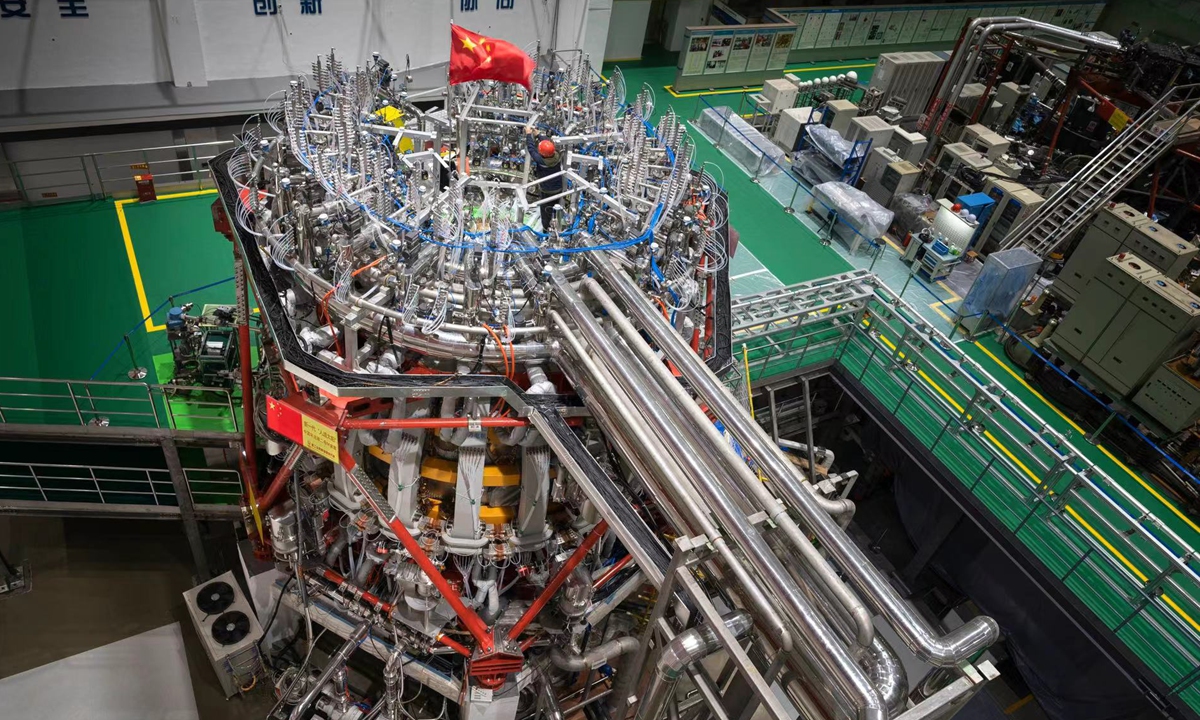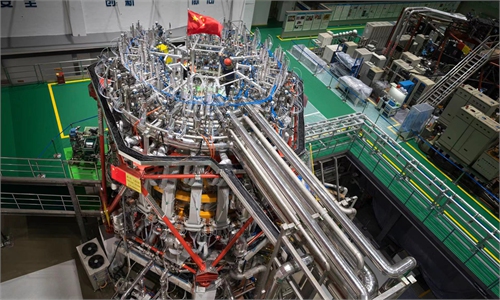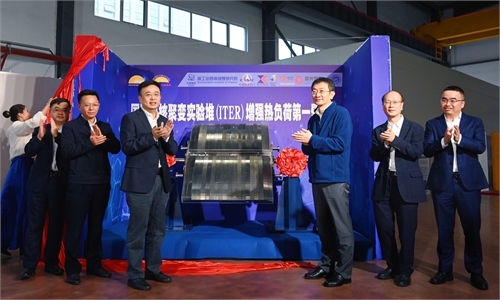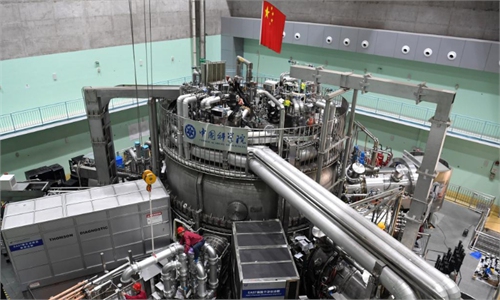
The new generation of "artificial sun" HL-2M Photo: Courtesy of the Southwestern Institute of Physics
Citing scientists from the Institute of Plasma Physics under the Chinese Academy of Sciences (ASIPP) in Hefei, East China's Anhui Province, the report on financial news site sina.com said that by simulating solar nuclear fusion reactions, scientists achieved new breakthroughs in generating fusion that can benefit the whole of mankind.
Scientists at the ASIPP said that they are aiming to use the EAST to generate fusion power before the centenary of the founding of the People's Republic of China, which falls in 2049, according to the report.
EAST has made steady progress in recent years since its launch in 2006. In April, it achieved a steady-state high-confinement long-plasma operation for 403 seconds, which was achieved after 120,000 shots. The breakthrough represented a major improvement from an earlier record of 101 seconds in 2017 and marked a crucial step for the project.
The "artificial sun" is located at the ASIPP in Heifei, and its ultimate goal is to generate nuclear fusion similar to the sun by using raw materials that are abundant in the sea, and provide steady supply of clean energy for human consumption.
Global Times



